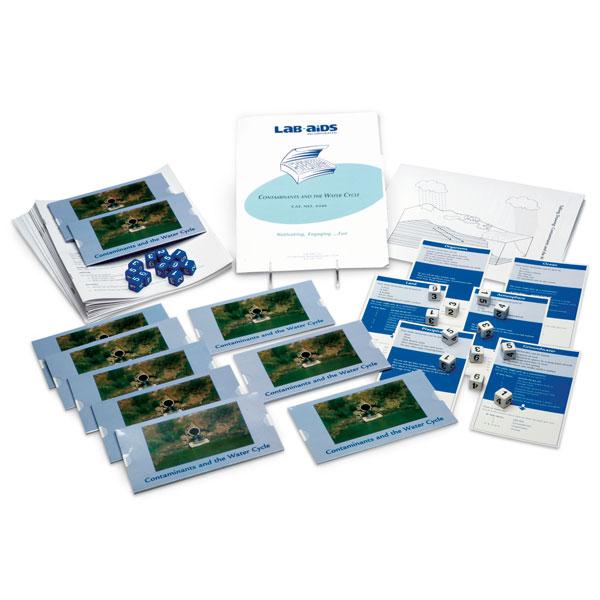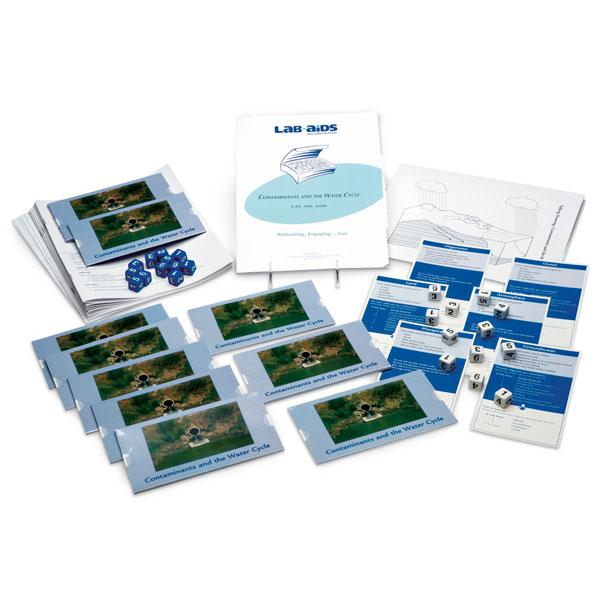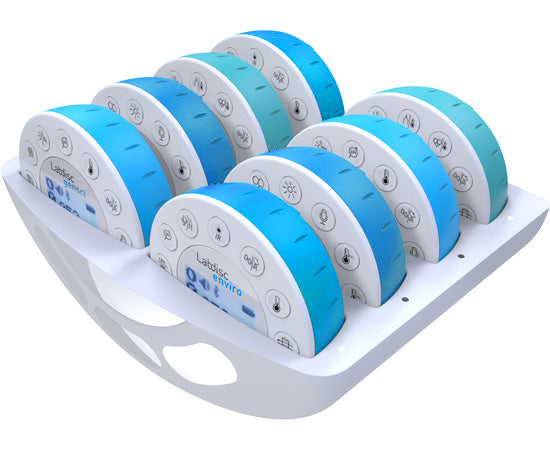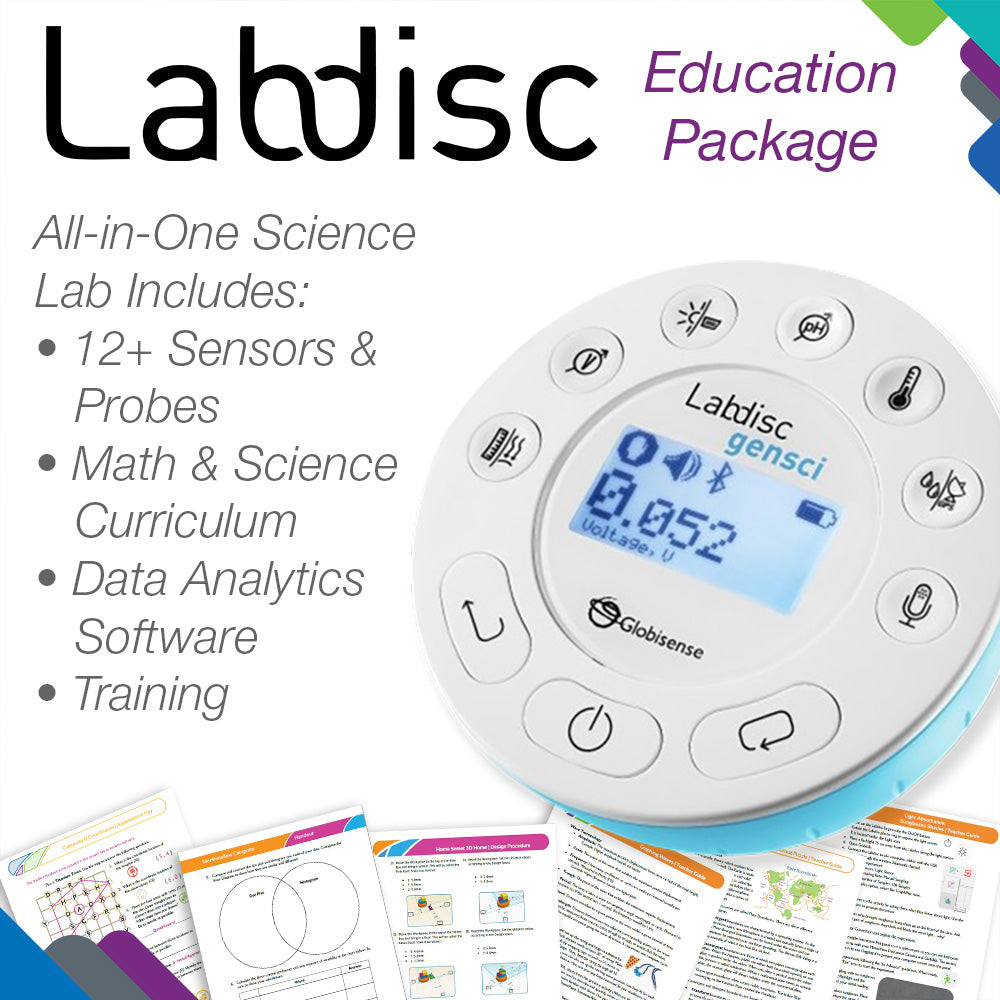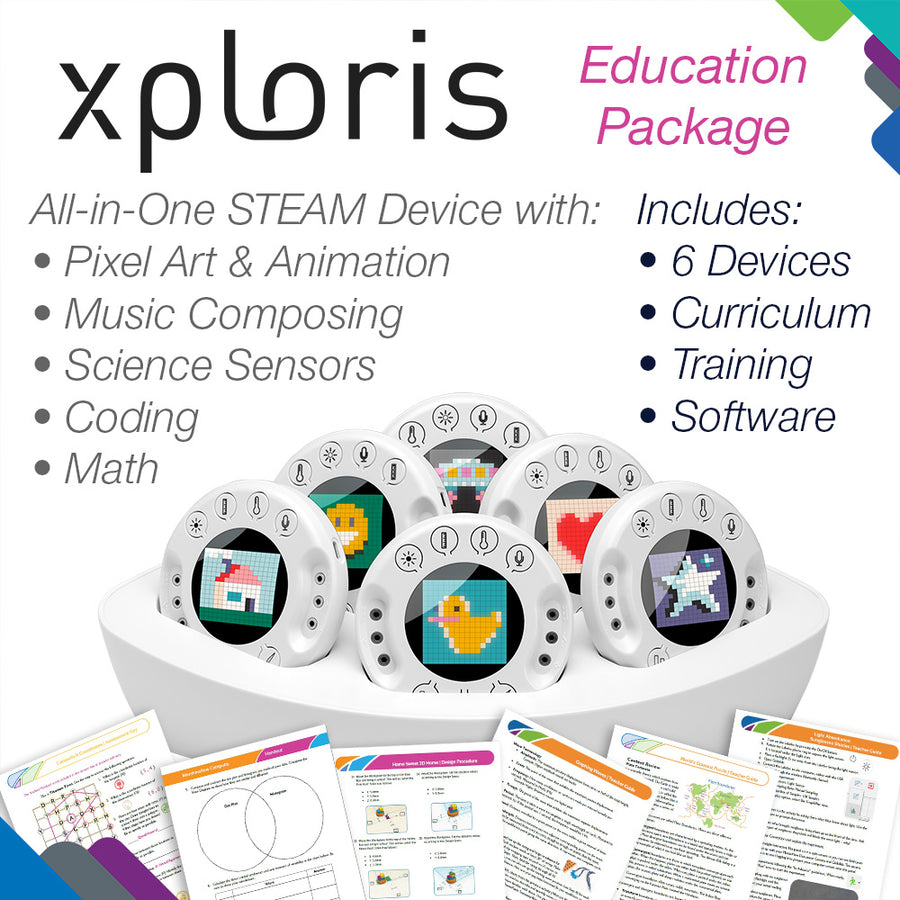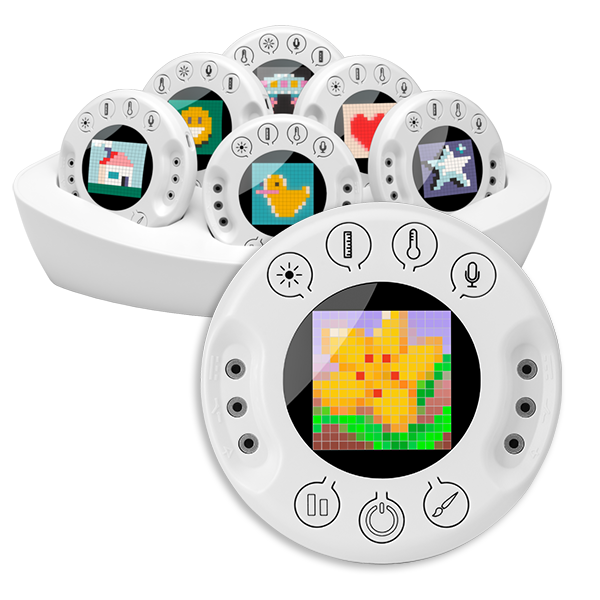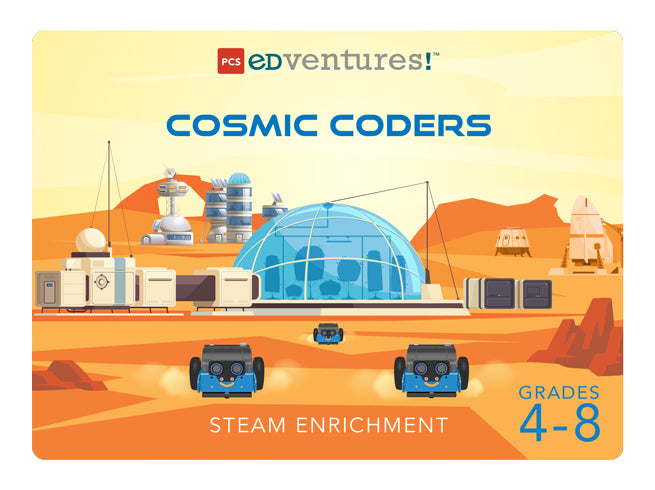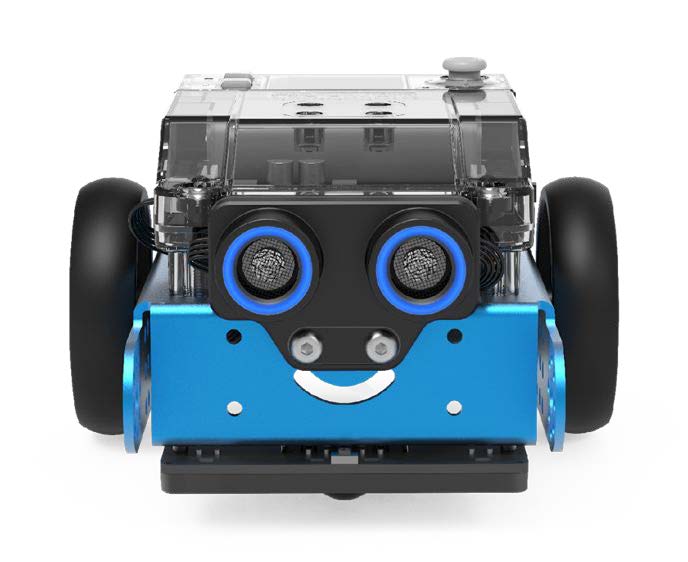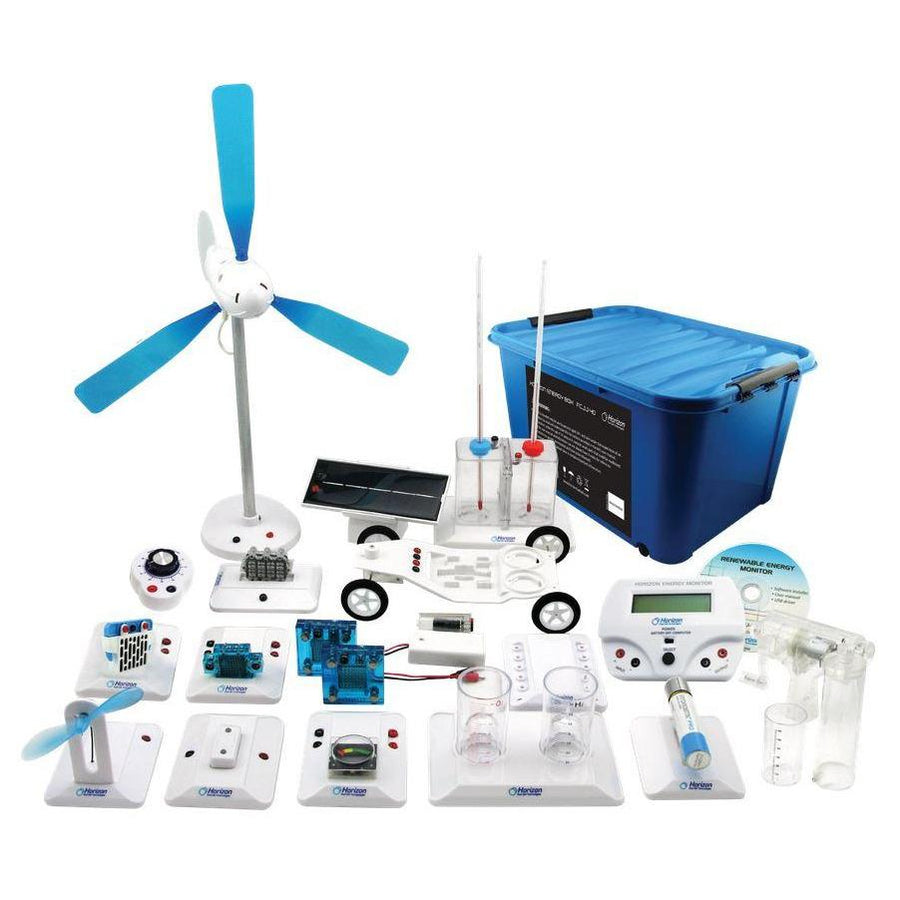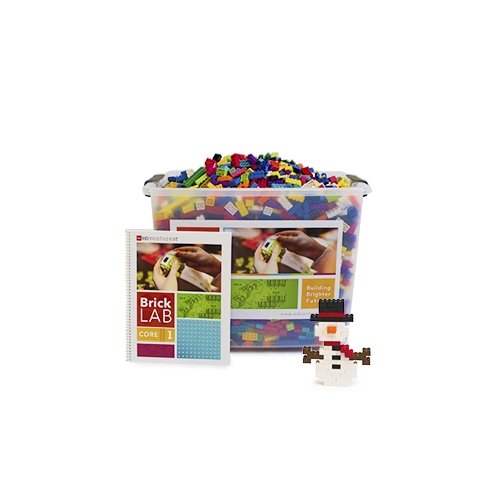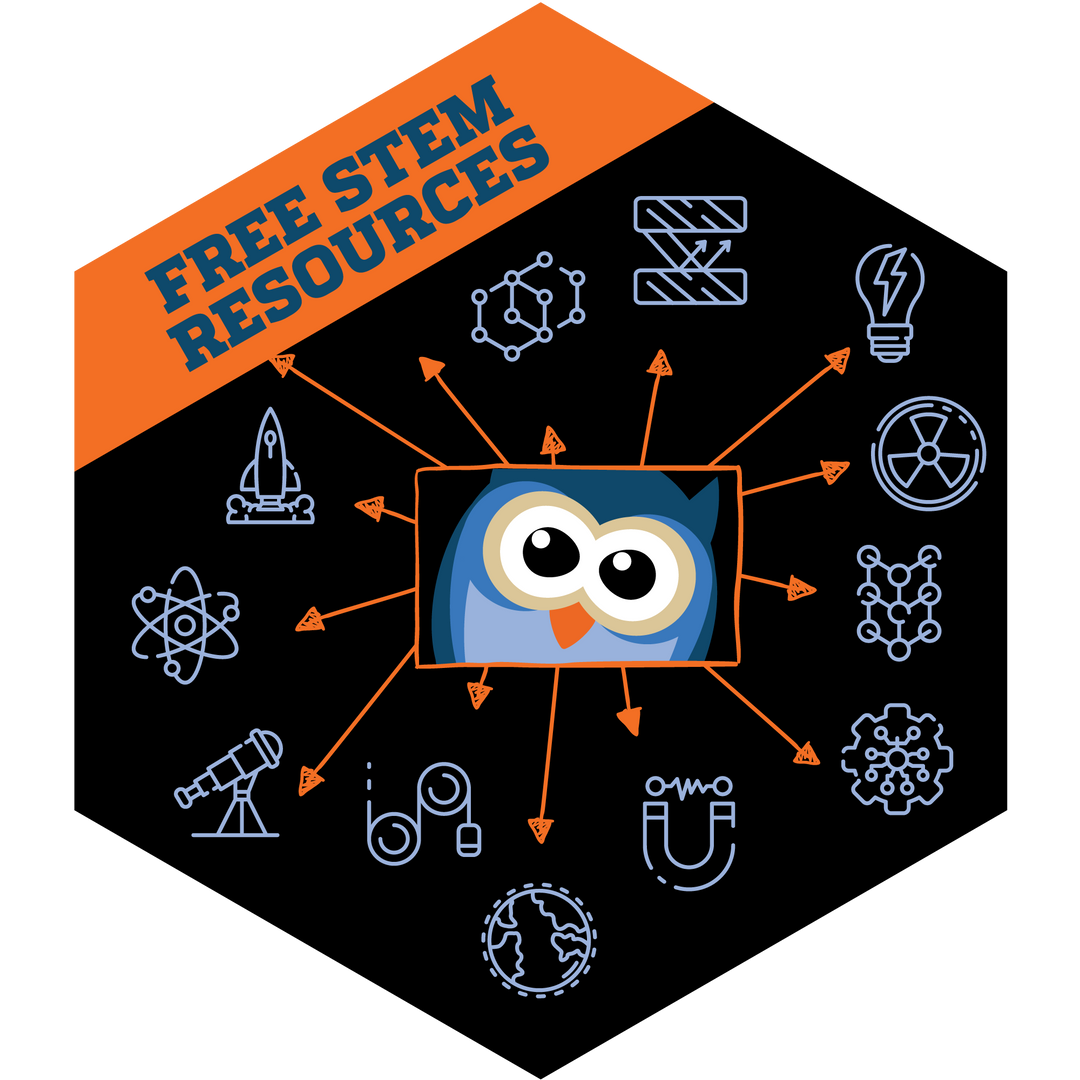In this modeling activity, students follow a molecule of water as it travels through the water cycle. The activity can be used to model both the basic water cycle and the water cycle with biological and chemical contaminants that are picked up along the way. Depending upon your situation, students can do the activity once, with or without contaminants, or they can do it twice, initially without contaminants and then later with contaminants. Students start at some point where water exits on Earth, such as in a river or a raindrop. Students then roll a dice and consult Water Cycle Cards to determine where their water molecule will go next. After making at least six rolls of the dice, each student writes a story that demonstrates an understanding of their water molecule's travels within the water cycle (and describes the types and sources of contaminants picked up along the way). Developed by SEPUP.
Scientific Concepts:
- Water circulates through the earth's crust, oceans, and atmosphere in the water cycle. It evaporates from the surface, rises, cools at higher elevations, condenses as rain or snow, and falls to the surface where it collects in lakes, oceans, and rock layers underground
- Water can contain chemical or biological contaminants
- Water can be contaminated by wastewater
- Creating models is one way to understand and communicate scientific information
Content List:
- 1 Teacher's Guide
- 28 Student Worksheet and Guides
- 12 Water Cycle Cards, sets of six, LAB-AIDS‚®
- 12 White number cubes
- 12 Blue number cubes
- 1 Transparency: Sample Responses to Analysis Question 1
- To complete this kit requires one to two ~50-minute class periods
- Number of students: 24
‚
